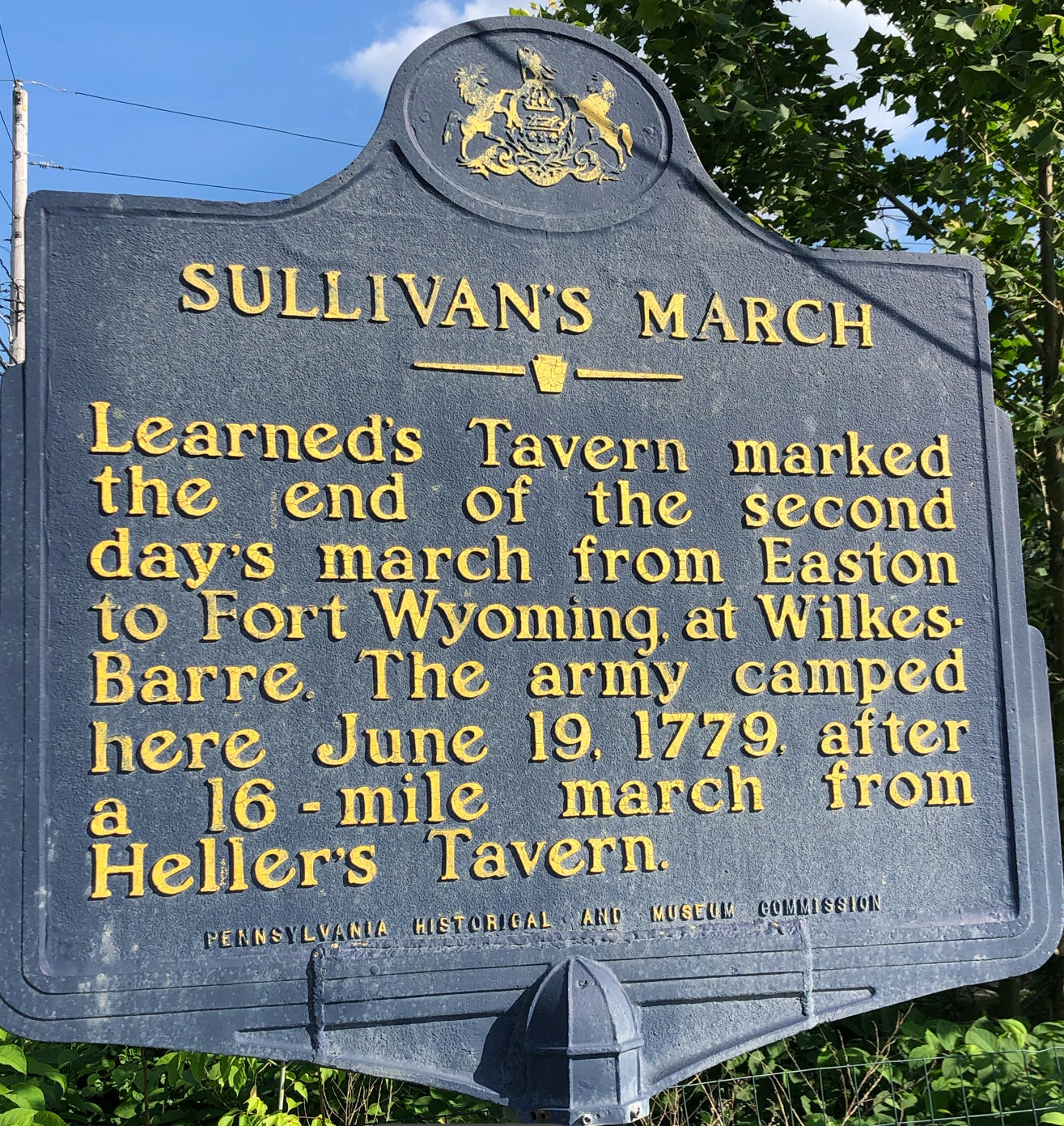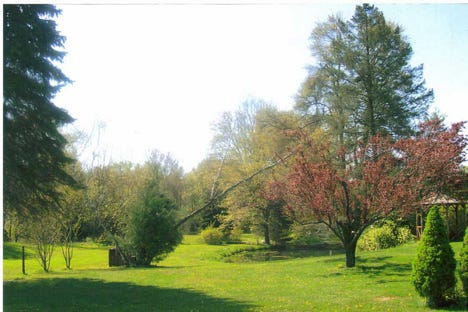The Revolutionary War years saw the frontier settlements in New York and Pennsylvania come under repeated attack from the Iroquois Indians and their Tory allies. The Iroquois Confederation, also known as the Six Nations, was a political and military alliance that included the Seneca, Cayuga, Mohawk, Onondaga, 0neida, and Tuscarora tribes. They openly sided with England in the Revolution, hoping to protect their homelands from the encroaching Americans. As mentioned in an earlier chapter, in 1777 British Brig. General Barry St. Leger failed in his plan to cut through the Mohawk Valley. But the British Loyalist Rangers and their Iroquois allies did not give up.
Most history books give little attention to the brutal war on the frontier between the Indians with their British military advisers and the Americans. But here the clash of civilizations between the Europeans and the Native Americans, which began as we have seen in King Philips’ War, continued to play out.
On July 3, 1778, British Loyalist Rangers and their Native allies engaged in the Wyoming Massacre, also known as the Battle of Wyoming. More than 300 American patriots were killed, and dozens who tried to surrender were ritually tortured. The Wyoming Valley was home to a large group of Seneca Iroquois. Their village was located on the upper reaches of the Susquehanna River near present day Scranton, Pennsylvania, about 60 miles from Brinker’s Mill.
The British Loyalist Rangers were led by John Butler, a veteran of the French and Indian War, who owned 26,000 acres of land in the Mohawk River Valley. At the outbreak of the Revolution he fled to Quebec in the company of other Loyalists, abandoning his Mohawk River land. He fought for the British, becoming a leader of the Rangers, and worked closely with Britain’s Native allies.
On November 11, 1778, a mixed force of Loyalists, British soldiers, Senecas, Cayuga, and contingents of Munsee, Delaware, Onondaga, and Tuscarora raided Cherry Valley, on the upper reaches of the Susquehanna River. A force of 250 settlers and militia were routed by British Loyalist forces, including 321 Iroquios, 150 Butler’s Rangers, and 50 British Soldiers. It is considered to be one of the most horrific frontier massacres of the Revolutionary War.
The following summer in 1779, George Washington sent General Sullivan to carry out a scorched earth policy against the Indians in the Wyoming Valley, all of whom had sided with the British. This Sullivan did, burning the food supplies of the Seneca Indians up and down the Wyoming Valley. The burning of the food crops of the Wyoming Valley Indians caused widespread starvation of the Indian population.
En route to the Wyoming Valley, General Sullivan stayed at John Learn’s Inn and used Brinker’s Mill as a supply depot for his troops. John Learn’s Inn and the Brinker Mill were only about 30 miles east southeast of the Susquehana River in the Pocono Mountains.
The historical marker above is in Tannersville, Pennsylvania. Photo by the author.
The Sullivan Campaign is also known as the Sullivan-Clinton Genocide. There were 1000 Iroquois warriors and 200-250 British Loyalist Rangers, also called “Butler’s Rangers,” against 4,000 Continental Army soldiers. The aim of the campaign was to take the war home to the enemy to break their morale.
The Continental forces suffered 33 killed and 41 wounded casualties during the Sullivan Campaign, which lasted from June 18 - October 3, 1779. The casualties of the Iroquois warriors and their British Ranger allies are unknown. However ultimately there were 5000 Iroquois refugees and 4,500 deaths from starvation, exposure, disease, and violence (per Koehler, fn 3).
Three years after the Wyoming Massacre, and two years after the Sullivan reprisals, another massacre took place, this time on the family farm of George and Anna (Brinker) Learn. George was the son of John and Caderina Learn.
* died in the Learn Massacre
One of the petitioners sheltering at Brinker’s Mill back in 1763 during the French and Indian War was Johannes Martinus (John Martin) Learn. He was born in 1719 in the German Rheinland and immigrated to North America at the age of 23, landing in Pennsylvania. Within a few years he met and married another recent immigrant, Caderina Habbenshuss, who was born in Holland. They lived in Philadelphia for a while, then in 1750 they ventured to the frontier of northern Pennsylvania, founding the village of Tannersville. John Martin Learn was a farmer and operated an inn, called Learn’s Tavern. Tannersville is located about 100 miles north of Philadelphia and 100 miles west northwest of Manhattan, in the Pocono Mountains.
Their first son, our ancestor, George Learn, was born in Tannersville, PA, in Northhampton County, 26th of January, 1761. At the time of the 1763 Indian raids little George would have been two years old and no doubt stayed at the Mill with the other neighbors and his future wife, Anna Margaretha Brinker, whose grandfather built and owned the mill.
By the time of the Revolution, George had married Anna Margaretha Brinker, daughter of Jacob Brinker. George was enrolled in the Northampton County Militia. George and Anna Margaretha lived with George’s parents John & Caderina Learn “over the Blue Mountain on a small run of water,” some miles away from the Brinker Mill along the banks of the Pocono Creek. By the 3rd of July, 1781, they had two children, John (our ancestor), age 2, and Susannah, 4 months. Only young John, age 2, would survive.
Here are the two recorded descriptions of what became known as the Learn Massacre, which occurred in the last years of the Revolutionary War:
From the "History of Wyoming" by Miner:
On the 3rd of July 1781, a bloody and most melancholy tragedy was enacted on the road leading from Wyoming to the Delaware. Mr. Learn, an aged man and his son George, were shot and scalped near their house. Another son, John, shot an Indian, who was left dead on the spot where he fell. The savages carried off George Learn's wife [Anna Margaretha] and an infant [baby daughter, Susanna], four months old.
From the "Genealogy of Western Pennsylvania" by Jordan:
Before and during the period of the Revolution there was a boat path from Stroudsburg to Tannersville along the banks of the Pocono Creek. Sometime after the settlement of the Learn family at the latter point, a settler, following the path, discovered the tracks of Indians about two miles away and on reaching Tannersville, at once informed the family of John Learn to enable them to guard against the sudden attack of the red men. The following day, George Learn repaired to a field adjoining his home, where he was engaged in mowing, when a band of Indians approached, placing themselves between their victim and the house, fired and wounded him. Securing a fence rail, he defended himself with great bravery, but was finally overpowered and killed while attempting to reach the house of his father John. After scalping him, the Indians started for the house and securing his wife and child, carried them to the Pocono mountains. The settlers, on ascertaining the facts, at once started in pursuit, and on reaching the mountain, to their horror discovered the body of the child, who had been scalped, lying not far from the mother, whom they had butchered in the most inhuman fashion, portions of her body being suspended from nearby trees. John Learn, the father, on hearing the firing, had approached to ascertain its cause, and, seeing an Indian, fired at him. This proved to be a fatal shot, as it revealed to the foe his presence and insured his speedy death at their hands. It was supposed he succeeded in killing the Indian he fired at, as a cap with a buckshot hole through it was found on the spot, but the body had been carried away by his comrades.
Site of the Learn Massacre at Coldwater Spring.
When the Iroquois first attacked the cabin, 17 year old Rebecca Learn grabbed her two year old nephew John, ran into the woods, and hid in the underbrush. The family’s little dog followed them. As the Indians started to approach the little dog began to bark. Aunt Rebecca stifled the young dog in her apron, saving her life and that of her nephew.
Two year old John Learn and his cousin Rebecca were the only survivors of the Learn Massacre. Neither his little sister Anna, his parents nor his grandparents survived. His mother threw little Susanna into the bushes to save her but the baby was discovered and murdered by the attackers.
After John’s parents, sister and paternal grandparents were murdered, two year old John was raised by the Brinkers, his maternal grandparents, at the Mill. Imagine the heartache of these grandparents. They had lost their beloved daughter Anna Margaretha and granddaughter Susanna, as well as their son and daughter in law. Four of the five victims of the massacre were our direct ancestors.
The Learn Massacre was part of the general warfare between the British and their Native allies during the Revolution. The British used the Iroquois as a tool to destroy the Americans, and to prevent the expansion of the new United States into Canada.
Orphan John Learn grew up at Brinker’s Mill, under the care of his maternal grandparents. When he was 23 he married Elizabeth Freese. Elizabeth was the daughter of John Freese, of Dutch descent, and Desire Williams. Desire was descended from the Williams family of western Massachusetts, of English descent. The Williams family were early settlers in western Massachusetts. Desire’s father was a large landowner in nearby Sheffield, Massachusetts.
Elizabeth Freese and John Learn married in 1802, after peace had returned. Their first two children were named George and Anna, after John’s murdered parents. Before the birth of their third child, they moved west to the shores of Cayuga Lake, to the town of Lansing, near present day Ithaca, New York. The area had been cleared of Native Americans by the Sullivan expedition, and was surveyed into lots. This area was part of the Central New York Military Tract. This tract encompassed 2 million acres of formerly Indian land. It was given to soldiers as compensation for their military service, and to families whose property had been destroyed by the British, the Loyalists, and their Indian allies.
Here on the shores of the beautiful finger lakes our ancestor Jefferson Learn was born in 1813. But he would only spend his early years in New York. By the time he was 19 years old, in 1832, he was pioneering in Licking County, Ohio, near present day Columbus. There he started a family with his new wife, Maria Case. Their daughter, Catharine Learn, would marry into the Miller family from Dutch Fork, another family that lost members due to fights with Native Americans and their British Allies during the Revolution.
The Dutch Fork settlement is the subject of the next chapter.
Sources:
Charles Miner, History of Wyoming, J. Chrissy, Philadelphia, 1845.
John Woolf Jordan, Genealogical and Personal History of Western Pennsylvania, Lewis Historical Publishing Co., New York, 1915.
Koehler, Rhiannon (Fall 2018). “Hostile Nations: Quantifying the Destruction of the Sullivan-Clinton Genocide of 1779.” American Indian Quarterly, 42 (4): 427-453.
Soondalter, Ron (July 8, 2011). “Massacre & Retribution: The 1779-80 Sullivan Expedition”, World History Group Magazine.
Murray, Stuart A. P. (2006). Smithsonian Q & A: The Americans Revolution. New York: HarperCollins.






What an interesting - and sad - family history, David. It's amazing you have researched it so well. Bravo.
I just read this account of the Learn Massacre. The caption under the picture of the Sullivan's March sign says that Tannersville is in New York. Tannersville is in PA.